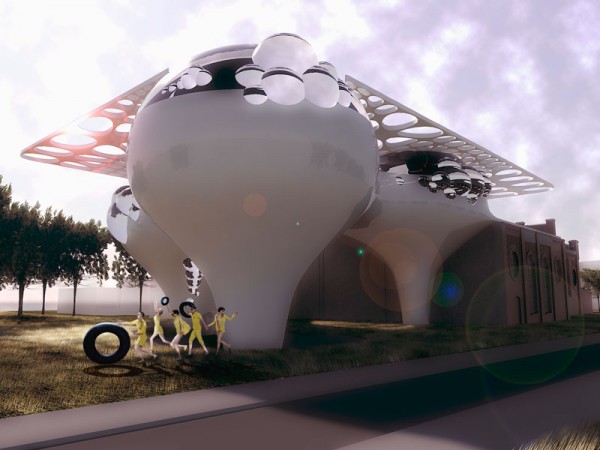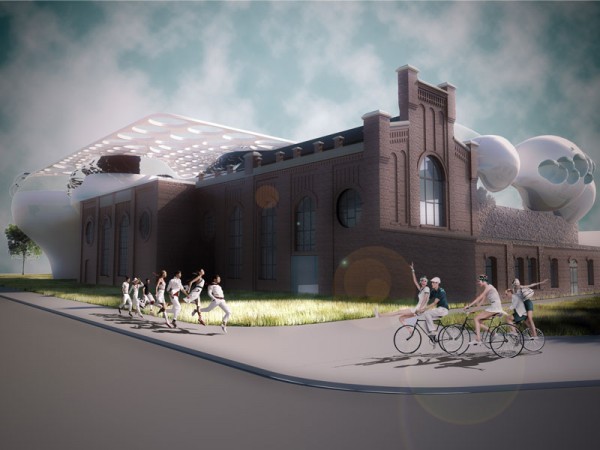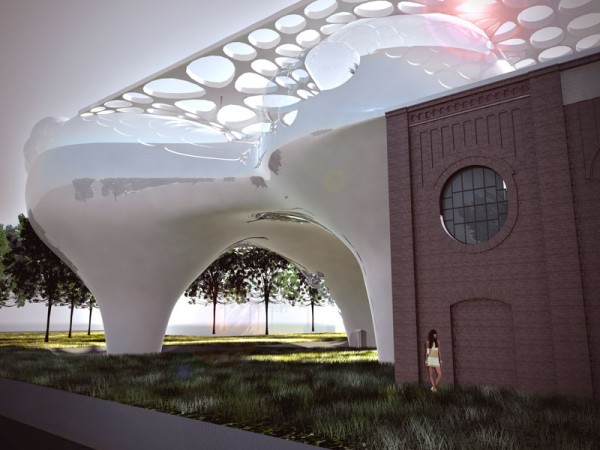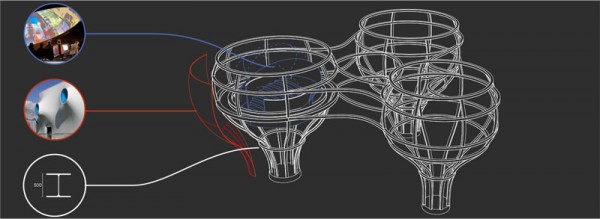Climate Change, rapidly growing megacities and the need for new energy sources are issues that need to be resolved in the urban context. The EU’s new climate ambitions are contained in a European Commission Roadmap for moving to a competitive low-carbon economy in 2050. It says the most cost-efficient way of moving to a low-carbon economy is by achieving a 40% cut in CO2 emissions by 2030 and a 25% cut by 2020, compared with 1990 emission levels. Poland has signaled its opposition to an EU plan for deeper carbon emission cuts. Poland, reliant on coal for more than 90% of its electric power, fears the move would make energy more costly. Coal and other fossil fuels emit CO2, seen as a catalyst for climate change. Motivation behind this project is to rise social awareness on importance of sustainability and alternatives energy sources.
The main topic of the project designed by Mikolaj Scibisz at Cracow University of Technology is the revitalization of historic powerhouse building. Project scope involves analysis of the existing wall fragments to determine elements to preserve, together with the concept of the new part of the object. Subject of reconstruction, was built in several stages. First hall of the building was built in 1901. Further elements were built with growing needs.
The main incentive for the architectural redevelopment of the old powerhouse in Radom, Poland is to reflect social, cultural and technological changes in both physical and functional way. The modern architectural design of the new part will represent dynamic sustainable development of technology and the social lifestyle with the respect to the historical building. Sustainability means not just durability and use of natural energy resources such as natural lighting, but to create a place that people of the local community and visitors can identify and accept as theirs.




















